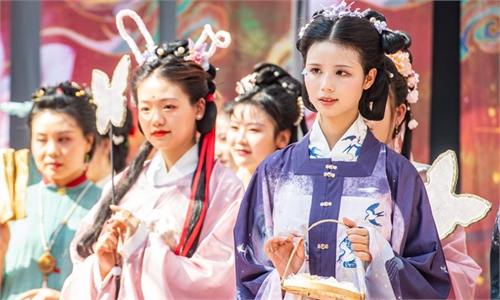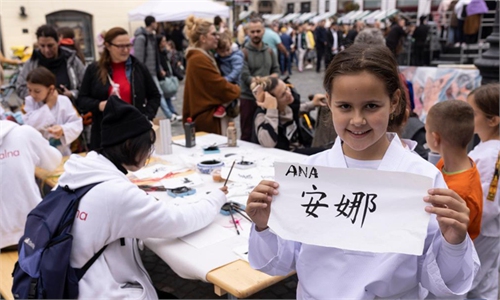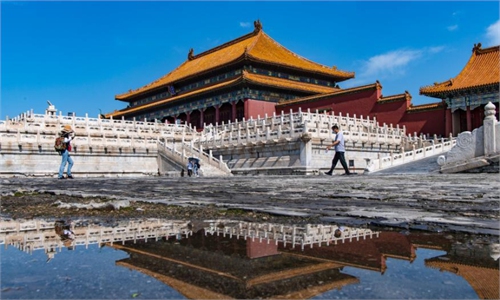ARTS / CULTURE & LEISURE
Cultural and art exhibition in Beijing tells stories of China’s Xizang Autonomous Region
Starlight on the Snow Land
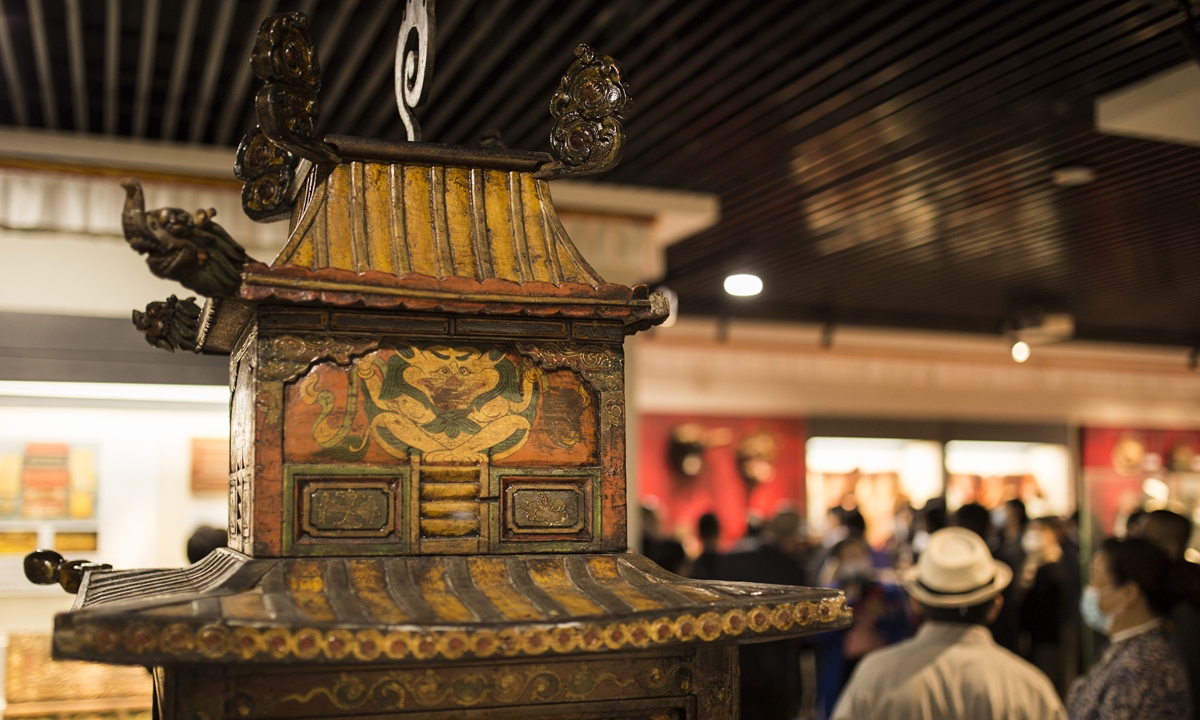
The upper part of a Tibetan Buddhist prayer wheel at the exhibition Photo: Shan Jie/Global Times
Where does the awe for nature come from in Southwest China's Xizang Autonomous Region? How was Tibetan Buddhism formed thanks to the cultural exchange in 7th century? What does a living room look like in a traditional house in Xizang?
Now visitors can see the answers with their own eyes through a newly opened exhibition on traditional Tibetan culture and art in Beijing.
Starlight on the Snow Land: Exhibition on Tibetan Culture and Art, which opened in the Tibetan Culture Museum in Beijing on Tuesday, showcases 321 exhibits representing life in Xizang and the region's great local characteristics.
Co-hosted by the China Tibetology Research Center and China Association for Preservation and Development of Tibetan Culture, the exhibition is set to run for a year.
Through the hundreds of exhibits on display, the exhibition explores the folk customs, cultural characteristics, spiritual world and aesthetic taste of the ethnic groups in the region so that visitors can better their understanding of the regional and ethnic characteristics of Xizang, as well as the integration and modernization of traditional Tibetan culture.
The exhibition is divided into a foreword and three sections.
The showroom starts with marine fossils and prehistoric human remains. More than 200 million years ago, the Himalayas were covered by the Tethys Sea, and the collision of the Indian Ocean plate and the Eurasian plate led to the continuous rise of the Earth's crust, creating the Qinghai-Xizang Plateau. The headwater of major rivers that produced Chinese civilization such as the Yellow River is located on the plateau. Some relics from the early residents in the region show people's reverence for the mighty power of nature.
The first section of the exhibition introduces life on the plateau with exhibits such as Tsampa bags, yogurt cones and Pulu knitting. The high-altitude, low-oxygen environment of the Qinghai-Xizang Plateau, as well as relatively scarce resources, has posed many challenges for the survival and development of human beings in the region. Yet through the joint efforts of the ethnic groups in Xizang, production and lifestyles were adapted to the high-altitude environment, allowing human beings to finally establish a foothold in the region and later thrive there.
The second section covers the deep religious influence in the holy land through cultural relics such as a set of Sakyamuni Buddha and Arhat thangka (Tibetan Buddhist paintings on cotton or silk). In the mid-7th century, Buddhism was introduced to the region and was combined with the local belief which gave rise to Tibetan Buddhism. It exerted significant influence on its politics, economy, culture and art of the region. Craftsmen and artists of various periods produced implements based on religion and culture, revealing exquisite craftsmanship.
The exhibition ends with a display of "the snow-land wisdom." It displays exquisite items such as Tibetan seals, writing pads and ink bottles. Xizang has a long history of writing. Since the creation of the Tibetan writing system in the 7th century, many rich and precious written documents have been produced. These documents are not only important carriers of traditional Tibetan culture, but also an important resource for the modern development and transformation of society and culture in Xizang.
"The exhibition will help visitors deeply understand the richness and diversity of Chinese culture. It also tells the Xizang story with love and heart," Chen Zongrong, secretary of the Party group of the China Tibetology Research Center, said at the opening ceremony of the exhibition.
"These collections represent the traditional civilization of Xizang and shine with the light of Chinese people's spirit and wisdom. The exhibition is sure to have a positive effect and practical significance when it comes to forging a strong sense of community for the Chinese nation," Ye Xingsheng, a painter, collector and art consultant for the exhibition, said at the opening ceremony.
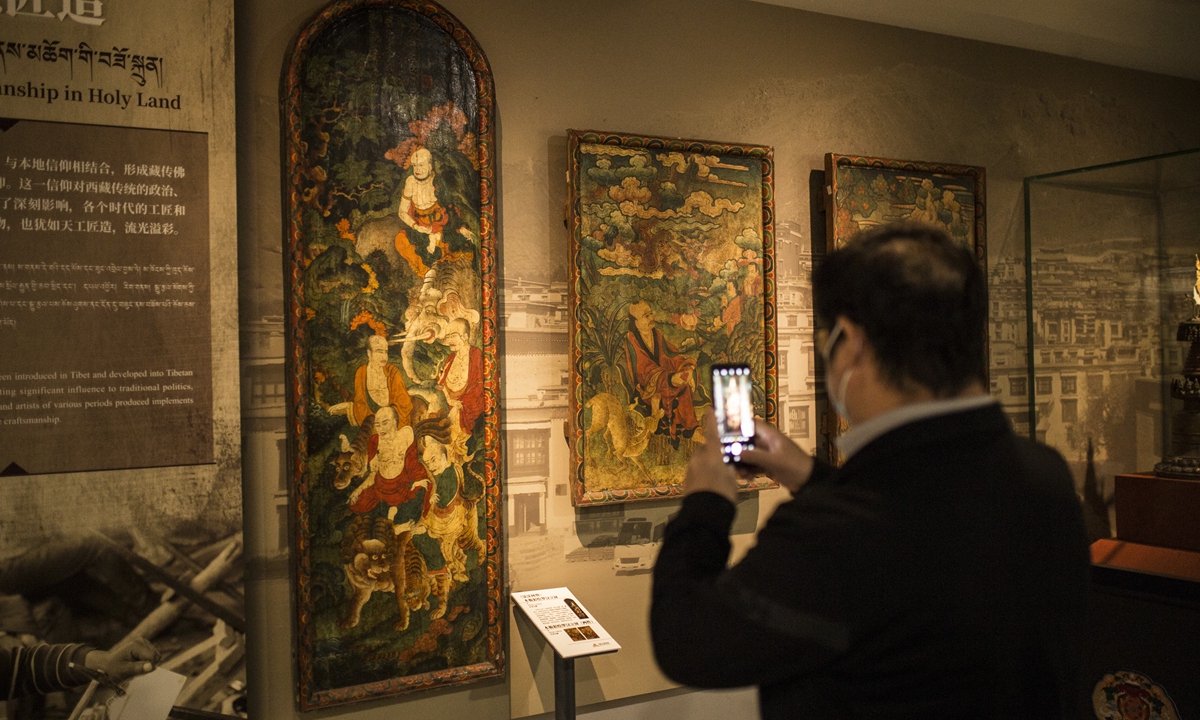
"Starlight on the Snow Land: Exhibition on Tibetan Culture and Art" opens in the Tibetan Culture Museum of Beijing on October 18, 2022. Photo: Shan Jie/GT
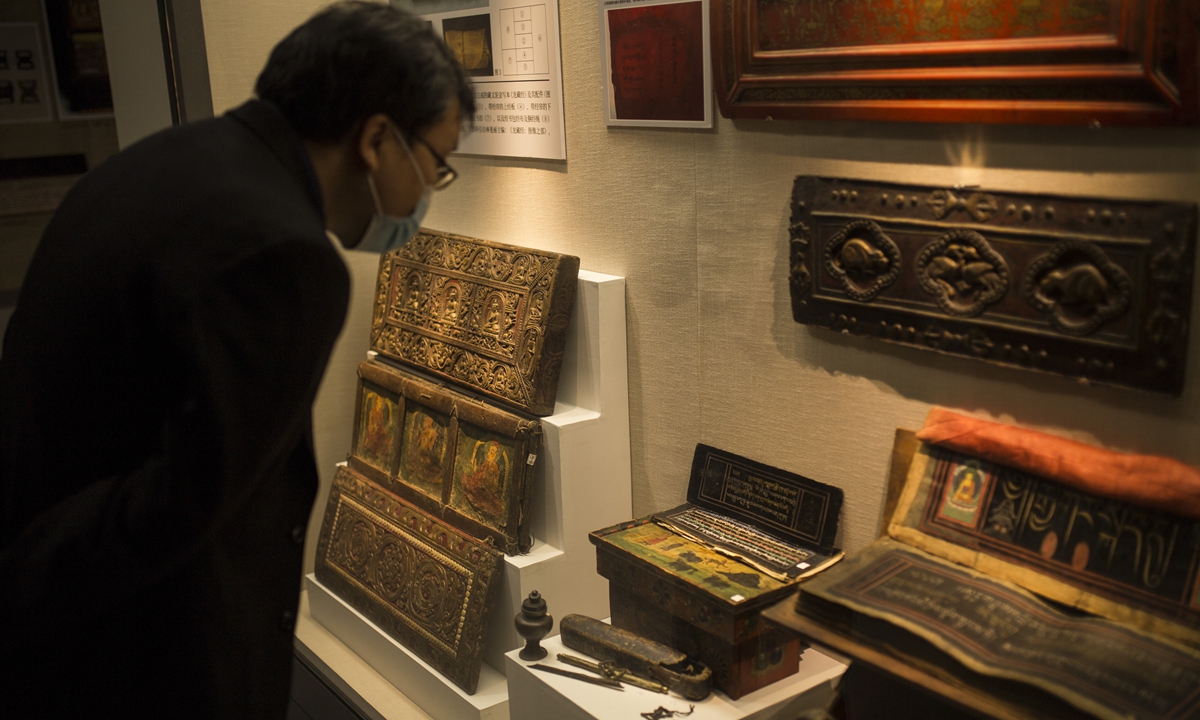
"Starlight on the Snow Land: Exhibition on Tibetan Culture and Art" opens in the Tibetan Culture Museum of Beijing on October 18, 2022. Photo: Shan Jie/GT
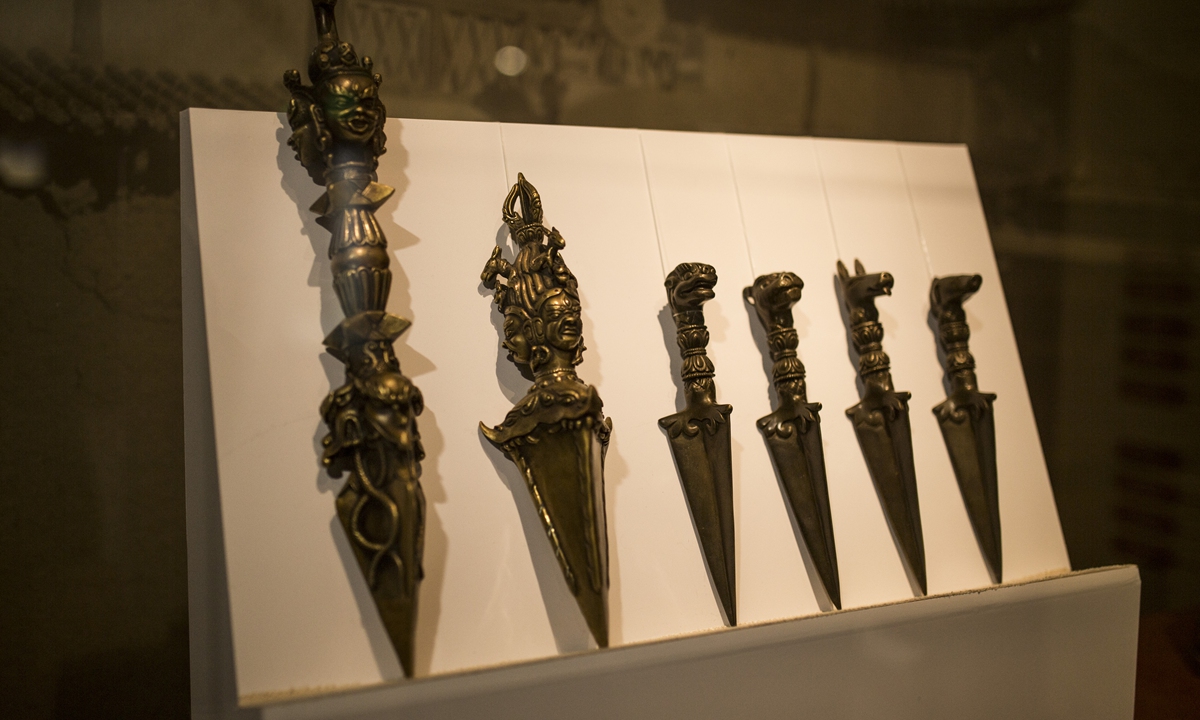
"Starlight on the Snow Land: Exhibition on Tibetan Culture and Art" opens in the Tibetan Culture Museum of Beijing on October 18, 2022. Photo: Shan Jie/GT
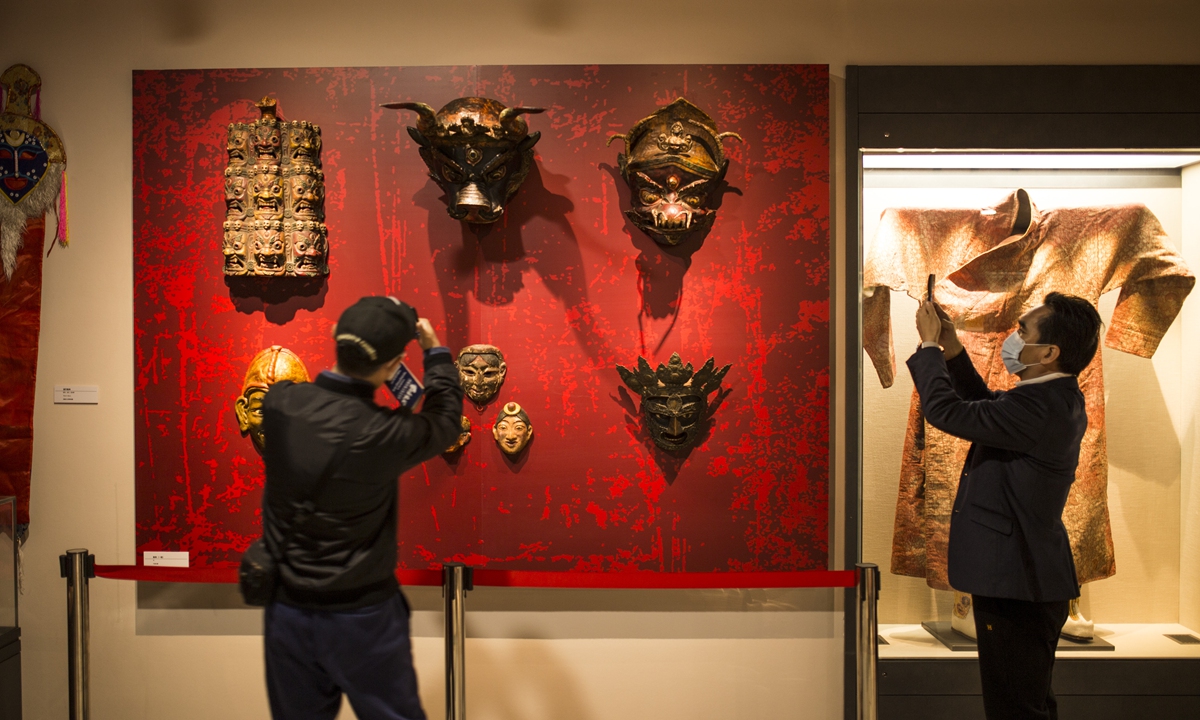
"Starlight on the Snow Land: Exhibition on Tibetan Culture and Art" opens in the Tibetan Culture Museum of Beijing on October 18, 2022. Photo: Shan Jie/GT

